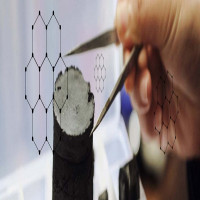PROTAC Technology: Modular Construction of Drug Molecules

Strong 8k brings an ultra-HD IPTV experience to your living room and your pocket.
What Is PROTAC Technology?
Proteolytic targeting chimera (PROTAC) is a new type of drug design technology that works by inducing the degradation of target proteins. Unlike conventional small molecules that typically inhibit protein function, PROTACs facilitate the ubiquitination and subsequent degradation of specific proteins. This bifunctional molecule consists of two distinct elements: a ligand that engages a target protein of interest and a second ligand that recruits the E3 ubiquitin ligase, a component of the ubiquitin-proteasome system responsible for protein tagging for degradation. By linking these two components, PROTACs create a bridge that brings the target protein into proximity with the E3 ligase, leading to its ubiquitination and degradation.
Currently, there are more than 160 PROTAC projects under development worldwide, of which nearly 20 projects are in clinical development. These projects involve a variety of disease targets, including cancer, inflammation, and neurodegenerative diseases. Frontier CRO companies like Alfa Chemistry are actively developing their wide range of PROTAC building block product lines.
Basic Structure and Function of PROTAC
A typical PROTAC is composed of three key structural components:
Target Protein Ligand: This moiety is designed to bind specifically to the protein of interest, including mainstream targets like transcription factors, kinases, and other regulatory proteins. The choice of ligand is critical as it determines the specificity and affinity of the PROTAC for its target.
Linker: The linker connects the targeting ligand to the E3 ligase ligand. It must be flexible enough to encompass the spatial arrangement necessary for effective protein interaction but sufficiently stable to maintain the integrity of the PROTAC. The linker length and composition can significantly influence the efficacy of the PROTAC.
E3 Ligase Ligand: This part of the PROTAC molecule ensures that the E3 enzyme can be recruited to the vicinity of the target protein and provides the necessary enzymatic support for the ubiquitination process.
How PROTAC Works
After the PROTAC molecule enters the cell, the target protein of interest (POI) ligand in its structure can specifically bind to the corresponding target protein, and the other end can recruit E3 ligase to form a POI-Linker-E3 ligase ternary complex, in which E3 ligase can mediate ubiquitination of POI by ubiquitin-binding enzyme E2. The ubiquitin-tagged POI is recognized and degraded by the proteasome. This process does not require the target protein ligand to occupy the binding site for a long time. The ubiquitination of the target protein can be completed instantaneously with the short formation of the ternary complex, and PROTAC can be recycled multiple times in the cell.
PROTAC vs. Traditional Small Molecules
Traditional small-molecule inhibitors work by binding to the active site of a target protein, thereby inhibiting its function. While this approach has been successful for many drug targets, it is limited by several factors:
Off-target effects: Small molecules can bind to unintended proteins, leading to side effects.
Drug resistance: Over time, mutations in the target protein can render small-molecule inhibitors ineffective.
Limited druggable targets: Many proteins lack well-defined drug-binding pockets, making them difficult to target with traditional small molecules.
In contrast, PROTACs offer several advantages:
Enhanced potency: PROTACs can achieve high potency by targeting protein degradation, rather than simply inhibiting protein function.
Selectivity: By leveraging the specificity of the target protein ligand and the E3 ligase ligand, PROTACs can exhibit high selectivity for the POI.
Overcoming drug resistance: PROTACs can degrade mutant proteins that are resistant to traditional small-molecule inhibitors.
Targeting undruggable proteins: PROTACs can target proteins that lack traditional drug-binding sites.
Note: IndiBlogHub features both user-submitted and editorial content. We do not verify third-party contributions. Read our Disclaimer and Privacy Policyfor details.


